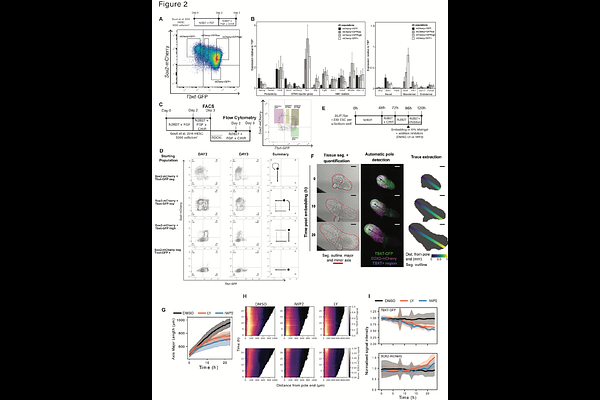Brachyury expression levels predict lineage potential and axis-forming ability of in vitro derived neuromesodermal progenitors

Brachyury expression levels predict lineage potential and axis-forming ability of in vitro derived neuromesodermal progenitors
Binagui-Casas, A.; Granes, A.; Ceccarelli, A.; Karagianni, E.; Ramajo, D. L.; Portero, R.; Annoh, J.; French, M.; Wong, F. C. K.; Chara, O.; Lowell, S.; Wilson, V.
AbstractNeuromesodermal progenitors (NMPs) produce the spinal cord and musculoskeleton in the elongating anterior-posterior axis. In vivo, NMPs possess dual potency, coinciding with regions coexpressing SOX2 and TBXT. In vitro, SOX2+TBXT+ cells can be produced from pluripotent cells and, like their in vivo counterparts, colonise neural and mesodermal embryonic regions. However, the potency of individual in vitro SOX2+TBXT+ cells is unclear, confounding comparisons with in vivo data. To address this, we developed a dual Sox2/Tbxt reporter mouse ESC line and demonstrate that single in vitro derived Sox2/Tbxt-expressing cells are bipotent NMPs. In vitro derived NMPs also exhibit lateral plate mesoderm potency when cultured in inductive conditions. Surprisingly, we identified two successively higher Tbxt threshold expression levels that correspond to mesoderm bias and specification, respectively. Moreover, clonally plated Sox2+/Tbxt+ cells self-propagate. Media and substrate composition alter the specification thresholds and consequent differentiation outcomes of in vitro derived mouse NMPs. Using this live reporter line, we uncover rapid inhibition of axis elongation following TBXT downregulation in response to WNT or NOTCH inhibition. In summary, this tractable cell line provides evidence supporting a key role for TBXT in tuning cell fate to drive axis elongation.